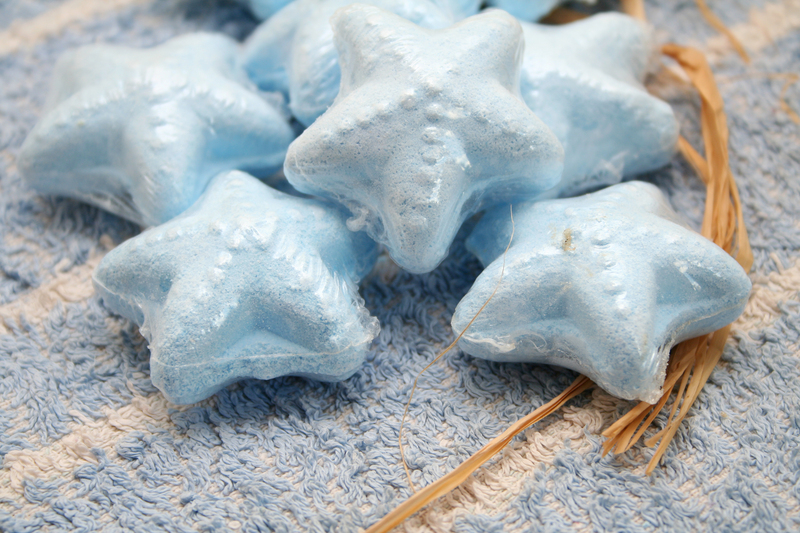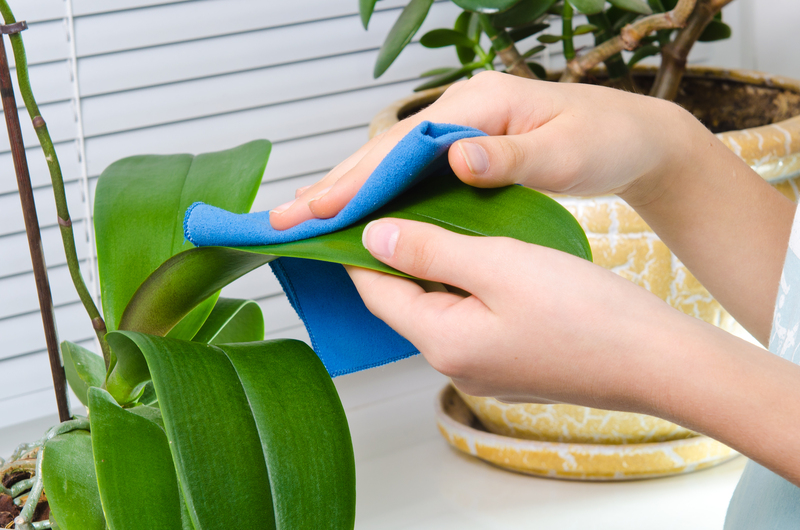Revamp Your Kitchen by Cleaning Burnt-on Residue From Stovetops
Posted on 26/08/2025
Revamp Your Kitchen by Cleaning Burnt-on Residue From Stovetops
A sparkling, clean stovetop can transform the atmosphere of your kitchen. However, over time, stubborn burnt-on residue, greasy stains, and food spills accumulate, making your stovetop look neglected and hard to use. Cleaning burnt-on residue from stovetops not only improves aesthetics, but also boosts hygiene, ensures better cooking performance, and adds years to your appliance's life. In this comprehensive guide, we'll unveil the best methods, expert tips, and valuable information to help you revamp your kitchen by restoring your stovetop to its former glory.
Why It's Important to Clean Burnt-on Residue From Stovetops
- Hygiene: Food residues foster bacterial growth and can contaminate your meals.
- Performance: Burnt-on grime can block burners, affecting heat distribution and causing inefficiencies.
- Safety: Accumulated grease poses a fire hazard and can trigger smoke alarms.
- Longevity: Regular cleaning prolongs the lifespan of your stovetop and keeps it functioning optimally.
- Appearance: A clean surface gives your entire kitchen a fresh and inviting look.
Now, let's get into the specific tactics and expert methods to remove burnt-on residue from your stovetop. Whether your appliance is gas, electric, ceramic, or induction, you'll find tailored solutions below.

Types of Stovetops and Their Cleaning Needs
Gas Stovetops
Gas stoves have removable grates and sometimes burner caps. The crevices around burners can easily harbor burnt-on residue. Cleaning gas stovetops typically requires gentle yet effective scrubbing of metal and porcelain components.
Electric Coil Stovetops
Electric coils can't be submerged, so careful wiping and spot cleaning are essential. The drip pans beneath are notorious for catching and burning food particles.
Ceramic or Glass Cooktops
These smooth surfaces are susceptible to scratching and need non-abrasive methods. Burnt-on grease can bake onto glass, creating a tough residue that requires special attention.
Induction Cooktops
Induction cooktops have a flat glass surface. The priority is avoiding damage while effectively removing stubborn build-up from the stovetop.
Essential Supplies for Deep Cleaning Stovetops
- Baking soda
- White vinegar
- Non-abrasive scrub pads or sponges
- Microfiber cloths
- Dish soap and warm water
- Plastic scraper or old credit card
- Rubber gloves (to protect hands)
- Spray bottle
- Lemon juice (optional for added freshness and grease removal)
How to Clean Burnt-on Residue from Stovetops: Step-by-Step Guide
Step 1: Prep the Surface
- Turn off the stove and allow it to cool completely.
- Remove grates, burner caps, or drip pans (if applicable).
- Wipe loose crumbs with a damp cloth.
Step 2: Soften Stubborn Residue
- Mix equal parts vinegar and water in a spray bottle. Generously spray the burnt-on areas.
- Let it sit for 15-20 minutes to break down grime and loosen the carbonized layer.
- For extremely tough spots, place a damp, hot towel on the residue to further soften it.
Step 3: Scrub Without Scratching
- Make a paste of baking soda and water. Spread evenly over the burnt-on spots.
- Using a non-abrasive sponge or pad, scrub gently in circular motions. Avoid steel wool or heavy-duty scouring pads that can scratch glass or enamel.
- If needed, use a plastic scraper or old credit card to lift up the loosened gunk.
Step 4: Clean Removable Parts
- Soak grates, burner caps, or drip pans in hot, soapy water for 15-30 minutes.
- Scrub with a brush or sponge; use a baking soda paste on stubborn spots.
- Rinse thoroughly and dry completely before reassembling.
Step 5: Final Wipe Down
- Use a microfiber cloth dampened with vinegar to wipe off baking soda residue and restore shine.
- Buff dry with a clean, dry cloth for a streak-free finish.
- Reassemble the stovetop once all parts are cured and dry.
Special Techniques for Tough Stains
Using Lemon Juice for Grease and Odor
Lemon juice is a natural degreaser and deodorizer. Squeeze fresh lemon over the burnt-on areas, let it sit for 10 minutes, and then scrub with baking soda. The acidic action helps dissolve residues and leaves a fresh scent.
Commercial Stovetop Cleaners
- For ultra-difficult stains, a specialized stove cleaner may be helpful.
- Always check the manufacturer's instructions and do a spot test on an inconspicuous area.
Razor Blade Scraper (for Glass Cooktops Only)
- Hold the razor blade at a 45-degree angle, gently scraping off burnt food.
Important: Use only on glass or ceramic; never use on gas or electric coils. - Follow with a thorough wipe and polish.
How to Prevent Burnt-on Residue Buildup
- Wipe up spills as soon as the surface cools after cooking.
- Clean the stovetop at least once per week, even if it doesn't look visibly dirty.
- Avoid overfilling pots and pans to reduce spillage.
- Use drip trays and covers to catch messes before they stick.
- Routinely inspect burners and adjust flame size to prevent overflow.
Eco-Friendly Stovetop Cleaning Solutions
If you prefer green cleaning, you can revamp your kitchen by using natural ingredients that are non-toxic and environmentally safe.
- Baking soda and vinegar: Natural, affordable, and effective at cutting through both grease and burnt-on residue.
- Lemon and salt: Lemons add acid; salt provides gentle abrasion.
- Castile soap: Safe, plant-based alternative to chemical cleaners.
These options will keep your kitchen safe for children, pets, and anyone with allergies or sensitivities.
Product Recommendations for Effortless Stove Cleaning
- Bar Keeper's Friend Cooktop Cleaner: Ideal for tough, baked-on stains on glass and ceramic surfaces.
- Cerama Bryte Cooktop Cleaning Kit: Includes cleaner and special pads designed for glass stovetops.
- Scotch-Brite Non-Scratch Scour Pads: Safe on most surfaces and effective at lifting stubborn gunk.
- Microfiber Cloths: Lint-free and perfect for buffing to a streak-free shine.
How Often Should You Deep Clean Your Stovetop?
Daily maintenance--wiping up fresh spills promptly--can greatly reduce the need for deep cleaning. However, for best results and to truly revamp your kitchen by removing burnt-on residue from the stovetop, aim for:
- Deep cleaning: Once a week or after a particularly messy cooking session.
- Moderate cleaning: Every 2-3 days if you cook frequently or tend to splatter food.
- Quick wipe-down: After every use to keep grime from building up.
Expert Tips for a Spotless Stovetop
- Don't let spills dry; the fresher the spill, the easier it is to remove.
- Use a stovetop cover when not in use to prevent dust and residue buildup.
- Keep a cleaning spray and cloth handy for quick action.
- Never use abrasive pads or harsh chemicals that may void your warranty or cause damage.
- If unsure, check your stove's user manual for manufacturer-recommended cleaning techniques.
Additional Hacks for Revamping Your Kitchen
Cleaning your stovetop is just the beginning! Here are more ways to give your kitchen a facelift:
- Shine your sink and faucets: Use baking soda and vinegar to keep these fixtures sparkling.
- Deep-clean backsplash tiles: Use a mixture of water and vinegar to dissolve grease and stains.
- Organize countertops: Clear unused gadgets and keep only essentials for a clutter-free look.
- Replace old dish towels and sponges: Fresh linens keep your kitchen feeling bright and sanitary.
- Wash cabinet doors and knobs: Food splatters can accumulate here unnoticed.

FAQs on Cleaning Burnt-on Residue From Stovetops
Can I use baking soda and vinegar on all stovetop types?
Yes, but with some care. Baking soda is safe for most surfaces. Be gentle on glass or ceramic to avoid scratching, and always rinse thoroughly. Vinegar should not be used on cast iron or aluminum burners as it can cause discoloration.
What should I avoid using to clean my cooktop?
- Steel wool or metal pads (can scratch or damage many surfaces).
- Oven cleaner (unless recommended by your stovetop manufacturer).
- Excessive water on electric coils, as it can cause malfunctions.
How can I clean around gas burners?
Use a soft brush or a toothpick to dislodge debris from tiny crevices. Remove and soak burner caps and grates regularly. Avoid getting water or cleaner inside the burner holes.
Is it safe to use a razor blade on the stovetop?
Only use a razor blade scraper on glass or ceramic cooktops, never on traditional enamel, gas, or electric coils. Always handle with care and at the recommended angle.
Conclusion: Enjoy Your Revamped Kitchen!
Cleaning burnt-on residue from your stovetop is a vital step for every modern kitchen. By following these expert cleaning techniques and preventative measures, you'll enjoy:
- A fresher-looking, more inviting kitchen
- Improved cooking results
- Enhanced safety and hygiene
- Greater appliance longevity
Make these stovetop cleaning strategies part of your regular kitchen routine and experience the joy of a truly revamped kitchen. For more tips on keeping your home sparkling clean, explore our other articles and guides!




